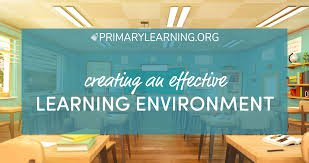The COVID-19 pandemic has dramatically reshaped the landscape of e-hall pass education in the United States, forcing schools to adapt rapidly to unprecedented challenges. As we transition into a post-pandemic world, it is crucial to examine how schools are evolving to meet the needs of students, educators, and communities. This article explores the multifaceted adaptations in U.S. schools, focusing on technological integration, changes in instructional practices, mental health support, and the overall educational environment.
The Shift to Technology-Enhanced Learning
Accelerated Adoption of Technology
One of the most significant changes brought about by the pandemic is the accelerated integration of technology into education. Prior to COVID-19, many schools were gradually adopting digital tools; however, the shift to remote learning necessitated a rapid embrace of Learning Management Systems (LMS), video conferencing platforms like Zoom, and various educational software. By 2021, over 70% of teachers reported that students were assigned personal devices, with this figure rising to over 80% in secondary schools.The reliance on digital tools has persisted even as students returned to in-person classrooms. Platforms such as Google Classroom and Schoology have become staples in many educational settings. For instance, an assistant superintendent noted that Google Classroom has become essential for middle and high school teachers. This technological shift not only facilitated remote learning but also opened avenues for more personalized and flexible educational experiences.
Innovative Pedagogical Approaches
The pandemic prompted educators to rethink traditional teaching methods. With a greater emphasis on small-group instruction and personalized learning, teachers have moved away from whole-class lectures toward more individualized approaches. This shift has been particularly beneficial for addressing diverse learning needs. Schools have implemented programs like “What I Need” (WIN) blocks, allowing teachers to provide tailored support while other students engage in independent work.Moreover, educators have increasingly utilized educational software—such as Lexia for reading and Zearn for math—to customize instruction based on individual student performance. This trend toward personalized learning not only helps mitigate learning loss but also fosters greater student engagement and ownership of their education.
Addressing Mental Health Challenges
The Importance of Social-Emotional Learning (SEL)
The pandemic has taken a toll on the mental well-being of students and educators alike. Increased stress, anxiety, and feelings of isolation have become pervasive issues within school communities. In response, many schools have prioritized social-emotional learning (SEL) programs and expanded mental health support services. These initiatives aim to foster resilience and emotional intelligence among students.Schools have begun hiring additional counselors and social workers to address these mental health needs. Some districts have adopted online platforms that allow students to report their emotional states anonymously, enabling staff to monitor mental health trends effectively. By integrating SEL into the curriculum, schools are not only supporting students’ emotional well-being but also enhancing academic success.
Teacher Well-Being
Teacher burnout has emerged as a significant concern during the pandemic. Educators faced immense pressure to adapt to new teaching modalities while managing their personal responsibilities. To combat this issue, schools are focusing on systemic support for teachers through professional development opportunities that emphasize stress management and self-careCreating supportive work environments that reduce administrative burdens can also contribute to teacher resilience. By fostering a culture of appreciation and collaboration among staff members, schools can mitigate feelings of isolation and overwhelm that many educators have experienced during this time.
Bridging the Digital Divide
Equity in Access to Technology
The shift to online learning has highlighted existing inequalities in access to technology and reliable internet connectivity. Students from marginalized communities faced significant barriers during remote learning periods, leading to notable learning loss. To address these disparities, schools are collaborating with community partners and leveraging government resources to provide technology access and internet connectivity.Investments in infrastructure are crucial for ensuring equitable access to education for all students. Initiatives aimed at providing devices and internet subsidies can help bridge the digital divide that has been exacerbated by the pandemic. As schools continue to embrace technology-enhanced learning models, addressing these equity issues remains a top priority.
Rethinking Educational Environments
Hybrid Learning Models
As schools adapt to post-pandemic realities, hybrid learning models—combining online and in-person instruction—are likely to become more prevalent. This approach offers flexibility for both students and educators while allowing for personalized learning experiences tailored to individual needs. By leveraging technology effectively, schools can create inclusive environments that accommodate diverse learning styles.Furthermore, hybrid models facilitate global collaboration among students and educators across geographical boundaries. Online platforms enable international exchange programs and joint research projects that enrich learning experiences and foster a sense of global citizenship.
Innovative Teaching Strategies
The pandemic has spurred innovation in pedagogical approaches as educators explore new instructional strategies. Blended learning models offer a combination of online flexibility with face-to-face interaction, allowing for more engaging educational experiences. Project-based learning, gamification, and experiential activities promote critical thinking and collaboration skills essential for success in today’s world.As educators experiment with these innovative strategies, they are redefining what effective teaching looks like in a post-pandemic context. The emphasis on creativity and adaptability will be vital as schools continue to navigate ongoing challenges.
Conclusion
The COVID-19 pandemic has catalyzed profound changes within U.S. schools as they adapt to a new educational landscape. From accelerated technology adoption to enhanced mental health support and innovative teaching strategies, these adaptations reflect a commitment to fostering resilience and equity in education.Moving forward, it is essential for educational leaders and policymakers to ensure that these changes positively impact student learning outcomes while addressing the evolving needs of both students and teachers. By harnessing the lessons learned during this unprecedented time, schools can build a more inclusive, flexible, and effective educational system for future generations.







Leave a Reply